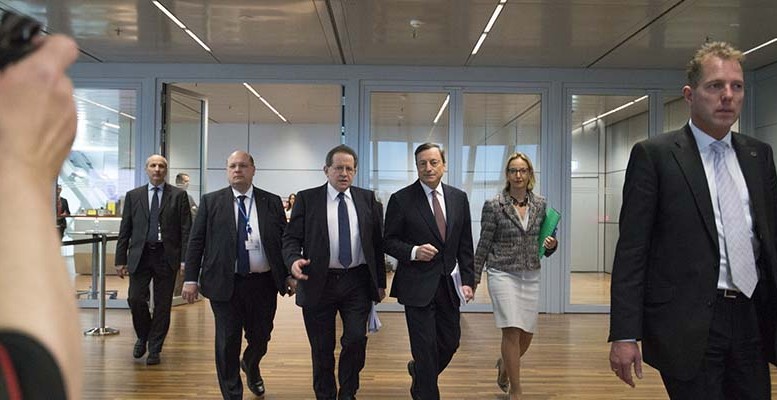UBS | As expected, yesterday’s ECB meeting provided neither new stimulus nor major new guidance on the policy outlook. The discussion was dominated by helicopter money (which according to Mr Draghi has not been discussed), the German criticism of the ECB’s low interest rate policy (which Mr Draghi diplomatically rejected) and the issue of whether or not interest rates could go down further (which could happen, if necessary). The ECB provided technical information on its corporate bond purchas e programme, which will start in June.
Regarding helicopter money, Mr Draghi stressed that the concept had not been discussed by the Governing Council. He reiterated that it was “fraught with legal and institutional difficulties”. Asked to comment on the German criticism of the ECB’s monetary policy, Mr Draghi appeared keen not to add fuel to the controversy. He underlined the ECB’s independence and argued that the Bank’s measures were necessary to deliver on its mandate of bringing inflation back to the target. The ECB’s introductory statement made a longer -than -usual reference to the necessity for structural reforms, thus echoing a long- standing demand of monetary policy hawks.
Mr Draghi argued that the ECB was aware of the “complexity” of negative interest rates, but that its experience with negative rates was overall positive so far, regarding the impact on credit and financial conditions, as well as the monetary policy transition mechanism. The introductory statement reiterated that key policy rates would “remain at present or lower levels for an extended period of time, and well past the horizon of our net asset purchases”, thus indicating that further interest rate cuts could happen, if required. Mr Draghi mentioned that the ECB “stands ready to act”, using all instruments available within its mandate.
Policy outlook unchanged: maturity of QE to be reassessed later in 2016
Our base case scenario for ECB policy remains unchanged: Following last month’s easing package, we think the ECB is “done” now and will not add m ore stimulus over the coming months. However, later in 2016, the ECB will have to reassess its QE programme and guide the markets as to how it wants to proceed after March 2017: continue the asset purchases as before (€80bn per month), gradually wind them down through “tapering”, or stop entirely. We might get a somewhat better idea after the next ECB meeting on 2 June, when it will present new staff macroeconomic forecasts up to 2018. But from today’s perspective, it seems unlikely to us that QE will come to a sudden stop in April 2017.
What does it mean for Credit?
To us, the details provided on the corporate bond purchase programme send the signal that the ECB is not afraid to wade into the market. Credit markets were strong heading into today’s announcem ent and show no signs of fading as the iTraxx Main and Crossover reach new tights. We see room for further tightening of European IG credit spreads as investors look to gain exposure to ECB -eligible assets.
As Mr Draghi spoke, the EUR strengthened, but later gave up its gains. A ccording to our base case scenario, ECB rates have bottomed out, but under a risk scenario, the deposit rate could potentially fall further.
*Image: ECB





